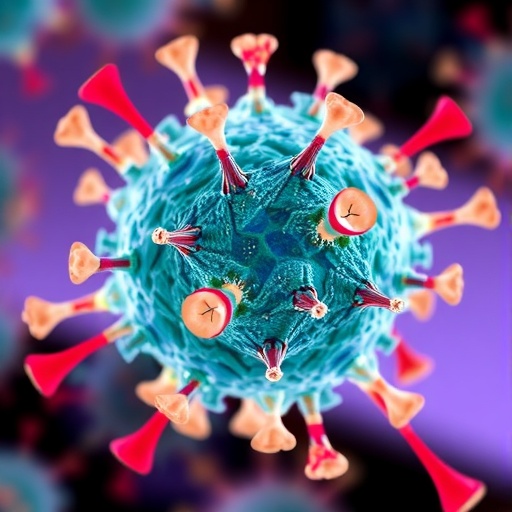
In recent years, the usage of non-steroidal anti-inflammatory drugs (NSAIDs) has increasingly come under scrutiny, particularly regarding their safety profile for vulnerable populations, such as children. A recent study conducted by Low, Sivanandy, Ingle, and their colleagues provides key insights into this pressing issue, assessing NSAID use and its associated complications in pediatric patients at a private tertiary care hospital in Malaysia. The findings of this research are insightful and raise several important questions about the management of pediatric pain and inflammatory conditions.
The significance of this research lies primarily in its focus on a demographic often overlooked in pharmacological studies—children. Pediatric patients, due to their unique physiological differences, may react differently to medications compared to adults. Therefore, the application of adult-derived data often leads to misguided treatment protocols. Low et al. recognized this gap and aimed to explore not only the prevalence of NSAID use among pediatric patients but also identify any complications that arose from their use. This meticulous approach is necessary to ensure that children receive the safest and most effective treatment options available.
The study indicates that a broad spectrum of NSAIDs is commonly prescribed in pediatric care, including ibuprofen, naproxen, and aspirin. While these medications are widely recognized for their efficacy in alleviating pain and reducing inflammation, their potential side effects can be significant. This is particularly important in pediatric medicine, where the margin for error is minimal. The researchers found that misunderstandings surrounding the correct dosages and indications for NSAID therapy were prevalent, contributing to complications that could have been easily avoided with proper guidance.
One of the major findings of the study pertains to the complications associated with NSAID use in children. The researchers noted that gastrointestinal disturbances were among the most frequently reported adverse effects. These issues, including nausea and abdominal pain, can significantly affect a child’s quality of life. The study called attention to the importance of education for both parents and healthcare professionals regarding the potential risks involved in NSAID administration to children and emphasized the need for strategies to mitigate these risks.
The exploration of NSAID use in this pediatric cohort also revealed an alarming trend regarding overdose incidents. The data indicated that a certain percentage of children were inadvertently given doses exceeding the recommended levels. This raises serious concerns about the mechanisms of communication between healthcare providers, parents, and caregivers. The complexity of pediatric dosing—where many factors, including weight and age, come into play—underscores the critical need for vigilance in prescription practices.
Another noteworthy aspect discussed in the study is the influence of parental attitudes toward medication. Many parents often equate “more” with “better” when it comes to pain relief, leading to misuse or overuse of NSAIDs. Education initiatives must be tailored to address these misconceptions, providing parents with a clear understanding of appropriate dosing and the importance of adhering to medical advice. By empowering parents with knowledge about the implications of their choices, we can work toward a safer approach to managing pediatric pain issues.
The researchers further highlighted the importance of healthcare practitioners remaining continuously educated about the pharmacokinetics and pharmacodynamics of NSAIDs in children. Ongoing training and workshops could be instrumental in improving the management of medications for pediatric patients. This is particularly relevant, as new NSAID products are introduced into the market periodically, along with evolving recommendations based on recent research findings.
In reflecting on the implications of this study, it is clear that a multi-faceted approach is necessary to address the concerns surrounding NSAID use in children. Collaboration among pharmacists, pediatricians, and primary care providers can enhance pain management protocols while minimizing potential risks. This involves not only refining prescribing practices but also actively engaging in discussions with families concerning the treatment plans for their children.
The role of regulatory agencies in this conversation cannot be overstated. Guidelines that specifically address pediatric populations need to be developed and refined, incorporating the latest research findings to ensure safe and effective treatment options. Moreover, these agencies should advocate for public awareness campaigns, aimed at educating parents on the safe use of NSAIDs in children, thereby enhancing community understanding and involvement in pediatric healthcare.
In light of the findings from this study, it is essential for the medical community to collectively prioritize the safety and efficacy of pediatric pain management strategies. The potential risks involved in NSAID use can no longer be ignored, and a proactive stance should be adopted to safeguard the health of children. Encouraging dialogue among healthcare providers, patients, and parents will facilitate better outcomes and promote a culture of safety within pediatric care.
As the research subjects expand into more diverse geographical and demographic populations, it will become increasingly important to compare these findings across different settings. By investigating variations in NSAID use and complications in diverse communities, we can gain valuable insights into the factors that contribute to safe medication practices in children. These comparisons could ultimately lead to better-tailored interventions that address specific needs within unique populations.
The complexity of managing pediatric pain through NSAIDs cannot be overstated. Through ongoing research such as that conducted by Low et al., the medical community can foster a better understanding of the complications associated with NSAID use in children. By embracing a comprehensive approach that includes education, collaboration, and vigilance, the landscape of pediatric pharmacotherapy can shift toward enhanced safety and efficacy, ensuring that our youngest patients receive the best possible care.
This research is not merely a call to action; it is a reminder of the responsibility borne by the medical community regarding the treatment of pediatric patients. The stakes are high, and parents trust healthcare professionals to provide safe and effective options for their children. As we continue to navigate the complexities of pediatric healthcare, the commitment to understanding and addressing the risks associated with NSAIDs must remain at the forefront of our efforts.
Only through understanding the depths of these issues can we hope to foster environments where children are cared for through safe, informed, and evidence-based practices. As this study highlights, there is still much work to be done in the realm of pediatric pain management, and the medical community must rise to the occasion, ensuring that every child has access to safe and effective treatment alternatives.
In conclusion, the assessment of non-steroidal anti-inflammatory drugs in pediatric patients reveals a landscape fraught with both opportunity and challenge. Low et al.’s study serves as a lighthouse guiding future research and practice in this domain. By embracing a proactive, informed approach, stakeholders—ranging from researchers to clinicians to parents—can work together to ensure that the legacy of our care is defined by safety, efficacy, and above all, empathy for our youngest patients.
Subject of Research: Assessment of non-steroidal anti-inflammatory drugs use and its complications among pediatric patients.
Article Title: Assessment of non-steroidal anti-inflammatory drugs use and its complications among pediatric patients at a private tertiary care hospital in Malaysia.
Article References: Low, J.Y.C., Sivanandy, P., Ingle, P.V. et al. Assessment of non-steroidal anti-inflammatory drugs use and its complications among pediatric patients at a private tertiary care hospital in Malaysia. BMC Pediatr 25, 638 (2025). https://doi.org/10.1186/s12887-025-06016-6
Image Credits: AI Generated
DOI:
Keywords: NSAID use, pediatric patients, complications, drug safety, pain management, clinical practice, medication education.
Tags: aspirin complications in young patientscomplications of NSAIDs in childrenevaluating NSAID effectiveness in childrenibuprofen and children safetymanagement of pediatric pain with NSAIDsnaproxen use in pediatric carepediatric NSAID use in Malaysiaprevalence of NSAID prescriptions for childrenresearch on pediatric pharmacologysafety profile of NSAIDs for pediatric patientstherapeutic guidelines for pediatric NSAID useunique physiological responses to medications in children





